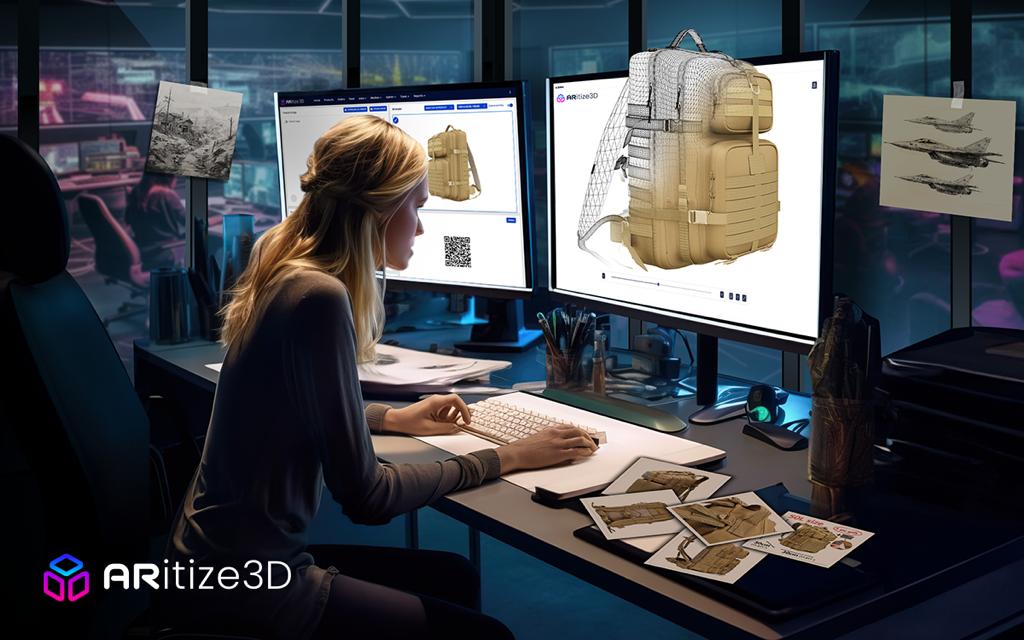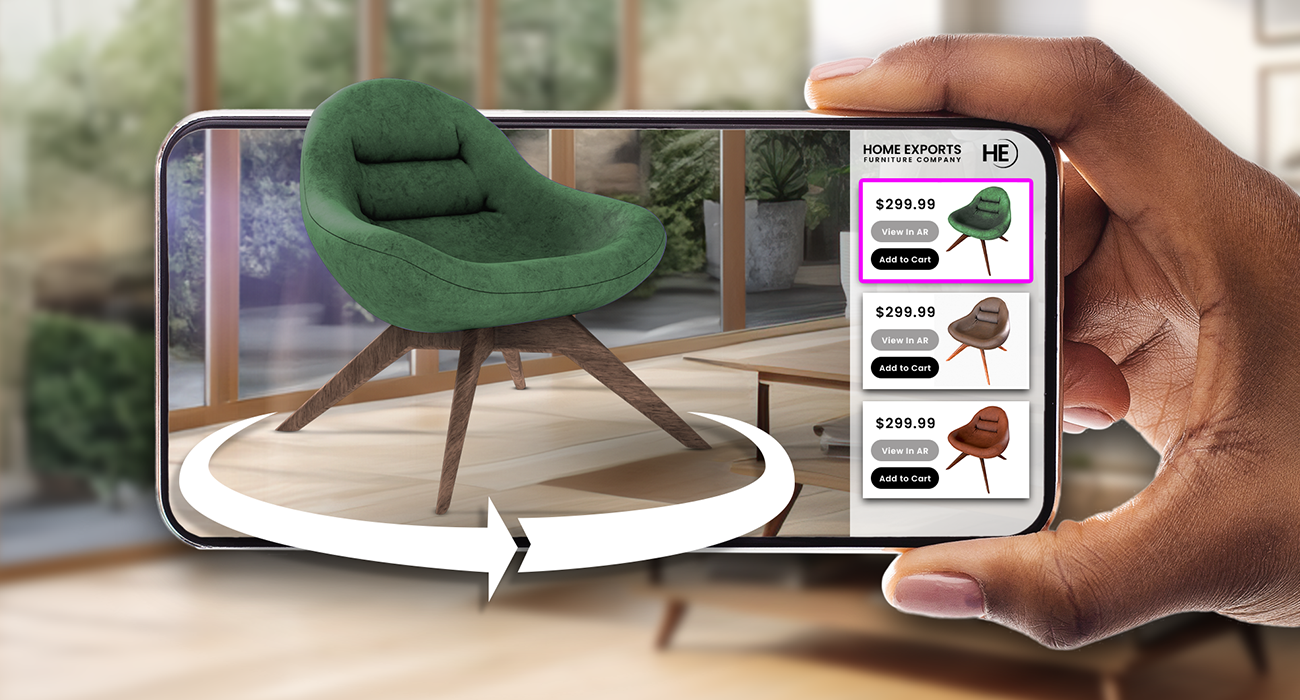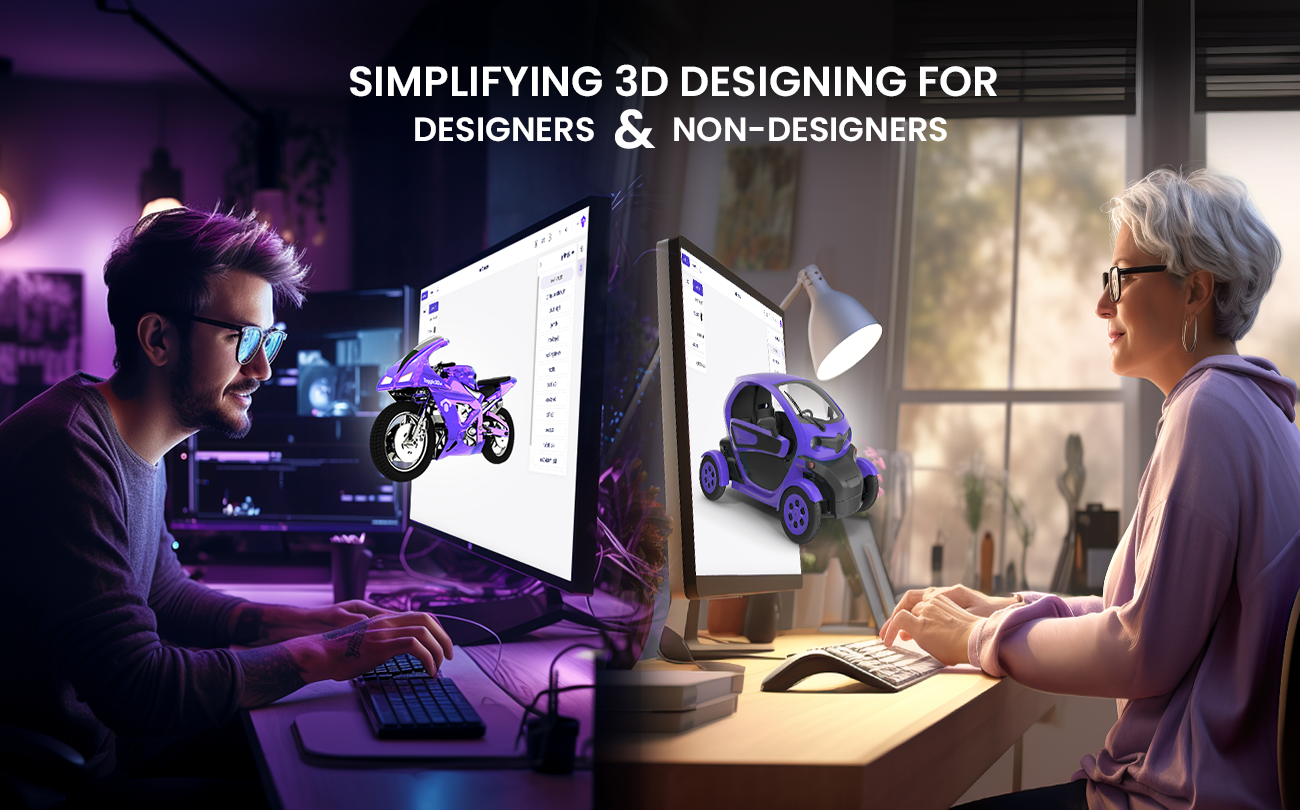At a glance:
- The Foundation of 3D Modeling
- The Role of 3D Modeling in Game Development
- 3D Model Creation for Games: Step-by-Step Process
- Different Applications of 3D Modeling in Gaming Industry
- The Future of 3D Modeling in Gaming Industry
- About ARitize3D by Nextech3D.ai
The gaming industry has undergone a remarkable transformation over the years, largely driven by technological advancements. One of the key innovations that has profoundly shaped modern gaming is the realm of 3D modeling. From the days of pixelated sprites to the intricately detailed game worlds we explore today, 3D modeling has become an indispensable cornerstone of game development. This blog discusses the pivotal role and impact of 3D modeling in the gaming industry.
The Foundation of 3D Modeling
At its core, 3D modeling is the art of creating digital representations of objects and characters in three-dimensional space. This technology, while now synonymous with 3D gaming, had humble beginnings. Early pioneers laid the groundwork for what would become a monumental shift in how we experience video games. As hardware capabilities grew, so did the potential for more immersive and visually captivating experiences.
During the 3D modeling process, an object's size, shape and texture can be defined. The process uses points, lines and polygons to create 3D shapes within the software. The crux of a 3D model design is made up mostly of vertices, which come together to form a mesh. Any point on the model can be modified to change the shape. To locate each vertical and horizontal point in relation to a visual reference, the software uses coordinate data.
With 3D modeling, the possibilities are virtually endless. It is a medium that may be used in many different applications and is incredibly versatile. But for now, let's discuss one of the most well-known applications of 3D modeling - game development.
The Role of 3D Modeling in Game Development
3D modeling is the bedrock upon which game developers construct entire universes. It's the meticulous process of translating concepts into tangible assets, from the graceful sweep of a character's cape to the towering architecture of a virtual city. This meticulous craft ensures that the fantastical realms of games are not only vibrant and captivating but also functional and coherent. In video games, 3D models are used to generate characters, environments, items and even whole universes. Every great game needs immersion and 3D modeling is a wonderful way to improve gaming graphics and keep the players engaged.
Furthermore, 3D modeling is crucial in the fascinating industry of virtual reality games too. Virtual reality games immerse you entirely in the gameplay and let you explore full three-dimensional worlds. Advanced 3D modeling techniques enable developers to optimize performance, maintain visual fidelity and adapt to the unique demands of VR hardware. As VR gaming gains prominence, the synergy between 3D modeling and this transformative technology ensures unforgettable and engaging gameplay.
To learn why 3D design is the future, read this.
3D Model Creation for Games: Step-by-Step Process
Creating 3D models for gaming requires creativity, technical skill and attention to detail. Listed below are the essential stages of 3D model creation. By following these steps, game developers can create 3D models that enhance the gaming experience, contributing to the immersive worlds players love.
-
Conceptualization: Define the object's purpose, style, and specifications based on the game's requirements.
-
Modeling: Create a 3D mesh, establishing the primary form and structure.
-
Detailing: Enhance the model with intricate features, considering polygon count and performance.
-
UV Mapping: Unwrap the model's surfaces for proper texture application.
-
Texturing: Apply textures to add realism, material properties, and visual appeal.
-
Rigging: Add a skeleton to objects like characters, enabling animations.
-
Animation: Bring the model to life through movement and interaction.
-
Optimization: Ensure the model is optimized for real-time rendering, meeting performance requirements.
-
Integration: Import the model into the game engine, setting up materials, lighting, and animations.
-
Testing and Iteration: Continuously test the model in-game, refining it until it fits seamlessly into the gaming experience.
Different Applications of 3D Modeling in Gaming Industry
Listed below are some key applications of 3D modeling in gaming industry -
-
Concept Art: It is the process of developing a character's overarching idea and aesthetic. To create a design idea, artists must employ a concept that encapsulates the significance of a project's goals, including its many characteristics, look, habits, behavior, background and so on. To develop concept art, artists must look for inspiration for their characters, research and character drafting sources. They typically start with a mood board and then create a sequence of sketches that show the character's main body, face and shape. When the design is complete, they can start working on the colors.
-
3D Character Design and Animation: 3D character design has revolutionized the way we perceive and interact with virtual personas. In the gaming industry, 3D character design has become a driving force, with beloved characters like Mario, Lara Croft and Master Chief captivating audiences worldwide. This technology empowers developers to sculpt characters with a remarkable level of detail, making them appear lifelike and expressive.
Furthermore, 3D modeling enables dynamic animations, allowing characters to display a wide range of emotions and movements. These animations bring characters to life, adding depth to their personalities and allowing players to form emotional connections. In essence, 3D modeling revolutionizes character design, transforming it into a fundamental element that drives player engagement and immersion.
-
Environment and World Building: The grandeur of expansive game worlds owes its splendor to the finesse of 3D game models. The seamless integration of towering mountains, meandering rivers and bustling cities is a testament to the skillful hands behind the scenes. Using 3D modeling, every building, bridge or structure can be meticulously crafted, complete with textures, intricate designs and realistic lighting. These 3D game assets transport players to realms brimming with mystery, thereby enhancing their overall gaming experience.
-
Props and Objects: Behind every barrel, every weapon and every trinket in a game lies the art of 3D model creation. These seemingly mundane elements play a pivotal role in building a rich and immersive narrative. The attention to detail that 3D modeling involves ensures that even the smallest in-game objects contribute to the overall enchantment. Whether it's a plant, a piece of furniture or a street lamp, a well-designed prop can help to create a more realistic setting. These props can enhance the ambiance of the game by adding to its 3D world's sense of life and realism.
-
Special Effects: Special effects are a dynamic component of modern gaming. 3D modeling serves as the foundation for crafting these effects, enabling developers to create explosions, intricate particle systems, and a range of visually stunning phenomena. By using 3D models as the core components of special effects, game designers can control the details and intricacies of these elements. Explosions, for example, can be created with realistic physics and intricate textures, lending them a sense of authenticity. Particle systems, like smoke, fire or magic spells, can be finely tuned for visual impact, enhancing the emotional response of players. The result is a heightened level of excitement and immersion in the game.
The Future of 3D Modeling in Gaming Industry
As technology continues to advance, the role of 3D modeling in the gaming industry is poised to expand even further. With the advent of virtual reality (VR) and augmented reality (AR), the demand for highly detailed 3D models and environments is expected to skyrocket. VR and AR technologies rely heavily on realistic 3D representations to create convincing and immersive experiences.
Additionally, as artificial intelligence (AI) becomes more integrated into game development, we can expect to see AI-driven 3D modeling tools that streamline and automate certain aspects of the design process, further accelerating game development timelines and opening new creative possibilities.
To learn how AI is revolutionizing customer experiences in the retail industry, read this.
Conclusion
3D modeling has redefined the way games are created, played and enjoyed. And as the gaming industry continues to evolve, it is sure to remain at the forefront of innovation, driving the creation of awe-inspiring worlds and unforgettable gaming experiences.
About ARitize3D by Nextech3D.ai
Nextech3D.ai is a diversified augmented reality, AI technology company that leverages proprietary artificial intelligence (AI) to create 3D experiences for the metaverse.
ARitize3D is a solution that utilizes Artificial Intelligence to turn 2D models and CAD files into 3D models that can be viewed in Augmented Reality. This powerful technology has been used in many industries to enhance the user experience and provide better visualization. To learn more about ARitize3D, click here.








